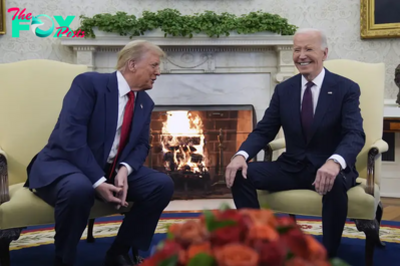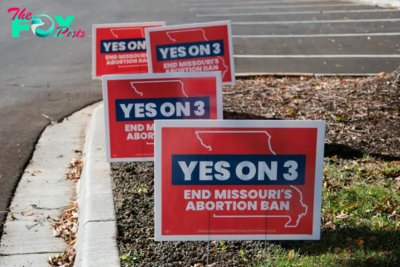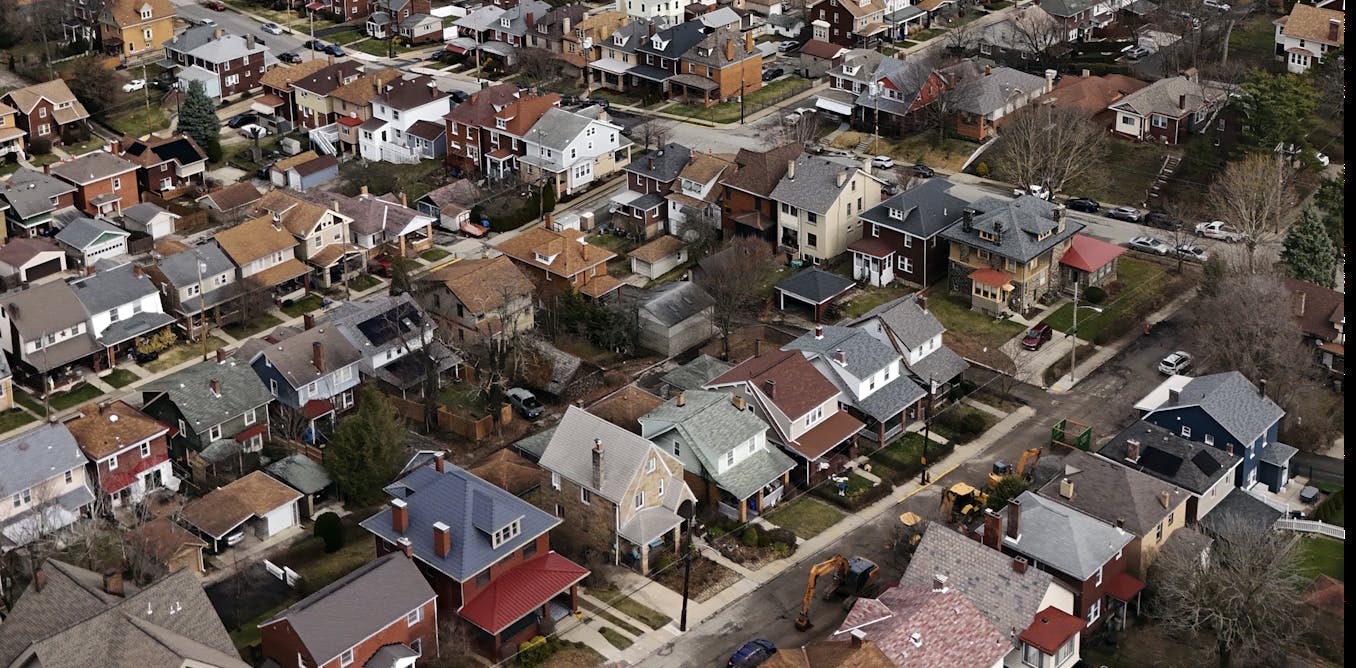Politics
Oppenheimer feared nuclear annihilation – and only a chance pause by a Soviet submariner kept it from happening in 1962
History has often been shaped by chance and luck.
One of the blockbuster films of the past year, “Oppenheimer,” tells the dramatic story of the development of the atomic bomb and the physicist who headed those efforts, J. Robert Oppenheimer. But despite the Manhattan Project’s success depicted in the film, in his latter years, Oppenheimer became increasingly worried about a nuclear holocaust resulting from the proliferation of these weapons.
Over the past 80 years, the threat of such nuclear annihilation was perhaps never greater than during the Cuban missile crisis of 1962.
President John F. Kennedy’s secretary of state, Dean Acheson, said that nuclear war was averted during that crisis by “just plain dumb luck.” As I detail in my forthcoming book, “The Random Factor,” nowhere was the influence of chance and luck more evident than on Oct. 27, 1962.
Russian missiles next door
To set the stage, a cold war of hostilities between the U.S. and the communist Soviet Union began almost immediately following World War II, resulting in a nuclear arms race between the two during the 1950s and continuing through the 1980s.
As a part of the Cold War, the U.S. was extremely concerned about countries falling under the Soviet communist influence and umbrella. That fear was magnified in the case of Cuba.

Tensions between the U.S. and Cuba had dramatically escalated following the failed 1961 U.S. attempt to overthrow revolutionary leader Fidel Castro and his communist ruling party. Known as the Bay of Pigs invasion, its failure proved to be a major embarrassment for the Kennedy administration and a warning to the Castro regime.
In May 1962, Castro and Soviet leader Nikita Khrushchev agreed to secretly deploy strategic nuclear missiles in Cuba, with the intention of providing a strong deterrent to any potential U.S. invasion in the future. The Russian missiles and equipment would be disassembled and shipped aboard freighters bound for Havana, then be reassembled on-site.
On Oct. 14, a high-flying U.S. U-2 spy plane photographed the construction of a missile launch site in western Cuba. This marked the beginning of the 13 days in October known as the Cuban missile crisis.
After heated deliberations with his cabinet and advisers, Kennedy decided on a naval blockade surrounding Cuba to prevent further Soviet ships from passing through. In addition, Kennedy demanded removal of all missiles and equipment already in Cuba.
This began a standoff between the U.S. and Russia. Ultimately, the missiles were disassembled and removed from Cuba. In exchange, the U.S. removed its Jupiter ballistic missiles from bases in Turkey and Italy.
But one utterly random – and utterly crucial – aspect of this resolution was not known until years later through the memoirs of, and interviews with, Soviet sailors.
‘Use the nuclear weapons first’
During the crisis, the Soviet Union had sent four of its Foxtrot-class submarines to the crisis area. Each submarine carried 22 two-ton torpedoes.
Unbeknownst to the U.S., one of those 22 torpedoes aboard each of the four subs was nuclear-tipped with a warhead yielding 15 kilotons, or a force equivalent to the Hiroshima bomb.
In a briefing before the four submarine coMMAnders set out for Cuba, Vice Admiral A.I. Rassokha of the Soviet Northern Fleet gave instructions that if attacked by the American fleet, “I suggest to you coMMAnders that you use the nuclear weapons first, and then you will figure out what to do after that.”

His advice came alarmingly close to being carried out.
In approaching the blockade area on Oct. 27, Captain Valentin Savitsky’s submarine B-59 had been under prolonged harassment from an array of U.S. ships, aircraft and helicopters attempting to force it to the surface. Needing to recharge the boat’s electrical system, the B-59 did eventually resurface, at which point Savitsky thought he had emerged into a full-scale conflict – surrounded by naval ships and planes, shots being fired across his bow, depth charges dropped and powerful blinding searchlights aimed at the conning tower. Thinking he was under attack, Savitsky gave the order to immediately dive and prepare the nuclear torpedo for firing.
And here was where pure luck intervened.
Stuck on a ladder
Staff Captain Vasili Arkhipov and an unnamed sailor aboard B-59 likely prevented World War III from occurring.
As Savitsky tried to descend from the conning tower into the hull of the sub and begin the dive, he was momentarily blocked by a signaling officer who had accidentally gotten stuck on the conning tower ladder. During this split second delay, Arkhipov, who was on the conning tower as well, realized that the chaos on the water’s surface was not an attack but rather an attempt to provide a warning.
Arkhipov, who had equal authority as Savitsky, immediately ordered the submarine to “cancel dive, they are signaling.”
World War III was very likely averted as a result of a brief delay in time caused by a sailor who happened to be stuck in the right place at the right time, along with a second-in-command who, when given a few extra seconds, perceptively realized that the boat was not under attack.
Had this not happened, Savitsky would have dived and in all likelihood within five minutes fired his nuclear-tipped torpedo, causing a cataclysmic reaction on the high seas and the world as a whole.
According to Martin Sherwin, co-author of the Pulitzer Prize-winning biography of Oppenheimer that the recent movie was based on, “The extraordinary (and surely disconcerting) conclusion has to be that on October 27, 1962, a nuclear war was averted not because President Kennedy and Premier Khrushchev were doing their best to avoid war (they were), but because Capt. Vasily Arkhipov had been randomly assigned to submarine B-59.”
This is but one of countless examples where global and Military History has been dramatically altered by chance and luck. On Oct. 27, 1962, the world was extremely lucky. The question that Robert Oppenheimer would surely ask is, will we be so lucky the next time?
-

 Politics3h ago
Politics3h ago‘We Are Reeling’: Trump’s Pick of Tulsi Gabbard Alarms Intelligence Community
-

 Politics3h ago
Politics3h agoThe Last Actions the Biden Administration Will Take Before Trump Takes Over White House
-

 Politics3d ago
Politics3d agoPolitical Scientist Dr. Ricky Jones: If Kamala Harris Won, Black People Would Have Another Excuse to Not Fight Back
-

 Politics3d ago
Politics3d agoAs He Staffs His Second-Term Administration, Trump Looks for Loyalty Above All
-

 Politics3d ago
Politics3d agoPopulist podcasters love RFK, Jr., and he took the same left-right turn toward Trump as they did
-

 Politics3d ago
Politics3d agoWhat to Know About Robert F. Kennedy Jr.’s Long History of Promoting Anti-Vaccine Views
-

 Politics3d ago
Politics3d ago‘Such Small Steps.’ States Without Citizen-Led Ballot Initiatives Leave Abortion-Rights Advocates With Little Recourse
-

 Politics3d ago
Politics3d agoWhat Trump’s Win Could Mean for Housing
















